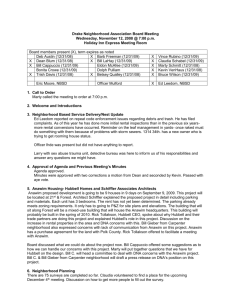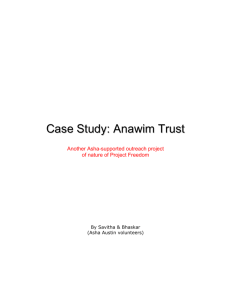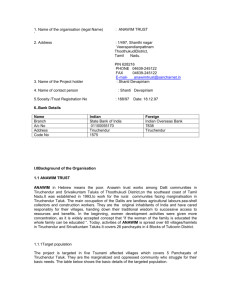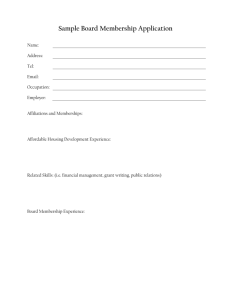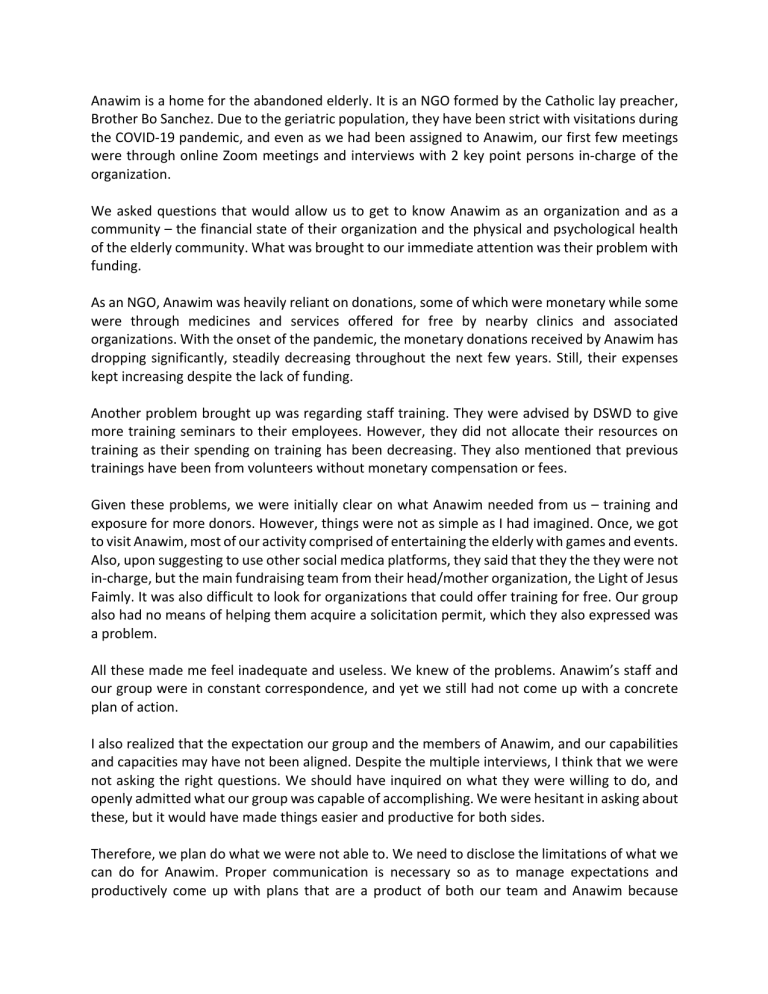
Anawim is a home for the abandoned elderly. It is an NGO formed by the Catholic lay preacher, Brother Bo Sanchez. Due to the geriatric population, they have been strict with visitations during the COVID-19 pandemic, and even as we had been assigned to Anawim, our first few meetings were through online Zoom meetings and interviews with 2 key point persons in-charge of the organization. We asked questions that would allow us to get to know Anawim as an organization and as a community – the financial state of their organization and the physical and psychological health of the elderly community. What was brought to our immediate attention was their problem with funding. As an NGO, Anawim was heavily reliant on donations, some of which were monetary while some were through medicines and services offered for free by nearby clinics and associated organizations. With the onset of the pandemic, the monetary donations received by Anawim has dropping significantly, steadily decreasing throughout the next few years. Still, their expenses kept increasing despite the lack of funding. Another problem brought up was regarding staff training. They were advised by DSWD to give more training seminars to their employees. However, they did not allocate their resources on training as their spending on training has been decreasing. They also mentioned that previous trainings have been from volunteers without monetary compensation or fees. Given these problems, we were initially clear on what Anawim needed from us – training and exposure for more donors. However, things were not as simple as I had imagined. Once, we got to visit Anawim, most of our activity comprised of entertaining the elderly with games and events. Also, upon suggesting to use other social medica platforms, they said that they the they were not in-charge, but the main fundraising team from their head/mother organization, the Light of Jesus Faimly. It was also difficult to look for organizations that could offer training for free. Our group also had no means of helping them acquire a solicitation permit, which they also expressed was a problem. All these made me feel inadequate and useless. We knew of the problems. Anawim’s staff and our group were in constant correspondence, and yet we still had not come up with a concrete plan of action. I also realized that the expectation our group and the members of Anawim, and our capabilities and capacities may have not been aligned. Despite the multiple interviews, I think that we were not asking the right questions. We should have inquired on what they were willing to do, and openly admitted what our group was capable of accomplishing. We were hesitant in asking about these, but it would have made things easier and productive for both sides. Therefore, we plan do what we were not able to. We need to disclose the limitations of what we can do for Anawim. Proper communication is necessary so as to manage expectations and productively come up with plans that are a product of both our team and Anawim because despite our inquiries and trips, there would be no doubt that they know more about their own organization. Coming up with decisions together would also encourage them to follow thorugh or sustain the programs even after our group is no longer actively supporting Anawim. This also builds a better relationship with Anawim as we move towards being a part of them, and not just a visiting third party. We should also suggest multiple and concrete plans of action in order for Anawim to share their willingness to adopt the project or whether it is feasible in the first place. Our group has thought of suggesting forming HR and fundraising teams that are in-house, so that any future projects would be shaped around Anawim and its needs. I would consider these suggestions to be viable or acceptable since this could not only help solve current problems, but also future concerns. Having a dedicated team from current employees would also come at less cost than hiring third party teams for their professional advice. Expenses on training would also have benefits over the long-term, and a capable fundraising team would offset such spending. As we lean towards actions that are sustainable for the organization, I believe that this displays magis, as it is taught in AMSPH. Our objective is not only to give temporary fixes to problems, but also think of plans that could mitigate future problems, and, even more, provide added benefit. I think that this should be true for dealing with all situations, including those in clinical medicine, public health, and business. We need to strive for the total well-being of the patient and anticipate diseases to provide preventive management. There should be as much policies for disease and disaster prevention as there are for response plans. And business proposals anticipate possible issues. And since we are given this opportunity, we should give it our all. My high school have always encouraged students to live by their motto of “quant je puis”, which means “ as much as I can”. I try to do what I can when I decide to actually do it. It is always important to maximize encounters, and make the most of what is offered. It is not common that I take chances to help people and make a difference, and I want to do it right. And to do so, I would have to admit my shortcomings and try harder. Personally, I also believe that failures are steps towards success if we learn from them. While I may have regrets regarding our communication in the early stages, it would not be too late to fix them. As it is was our first time in this sort of situation, it would be a good source of learning on my part. Honesty in partnerships, such as this, could even strengthen relations and build trust, anticipating a more fruitful relationship. In conclusion, I felt inadequate as I was faced with my inability to provide immediate solutions for Anawim’s problems. However, through proper communication, we may be able to manage expectations and, together, come up with plans that would be possible for Anawim and our group. One suggestion would be to create HR and fundraising teams that we think would be practical, sustainable, and viable. These would pave the way for other interventions such as training of employees, expansion of donor list, and opening of other social media accounts (i.e. TikTok) for added exposure. With the perspective of magis, quant je puis, and fruitful failure, I was able to come into terms with my mistake in communicating our group’s concerns as we choose to now be honest and communicate more openly to promote collaborative decision-making for the benefit of Anawim.
